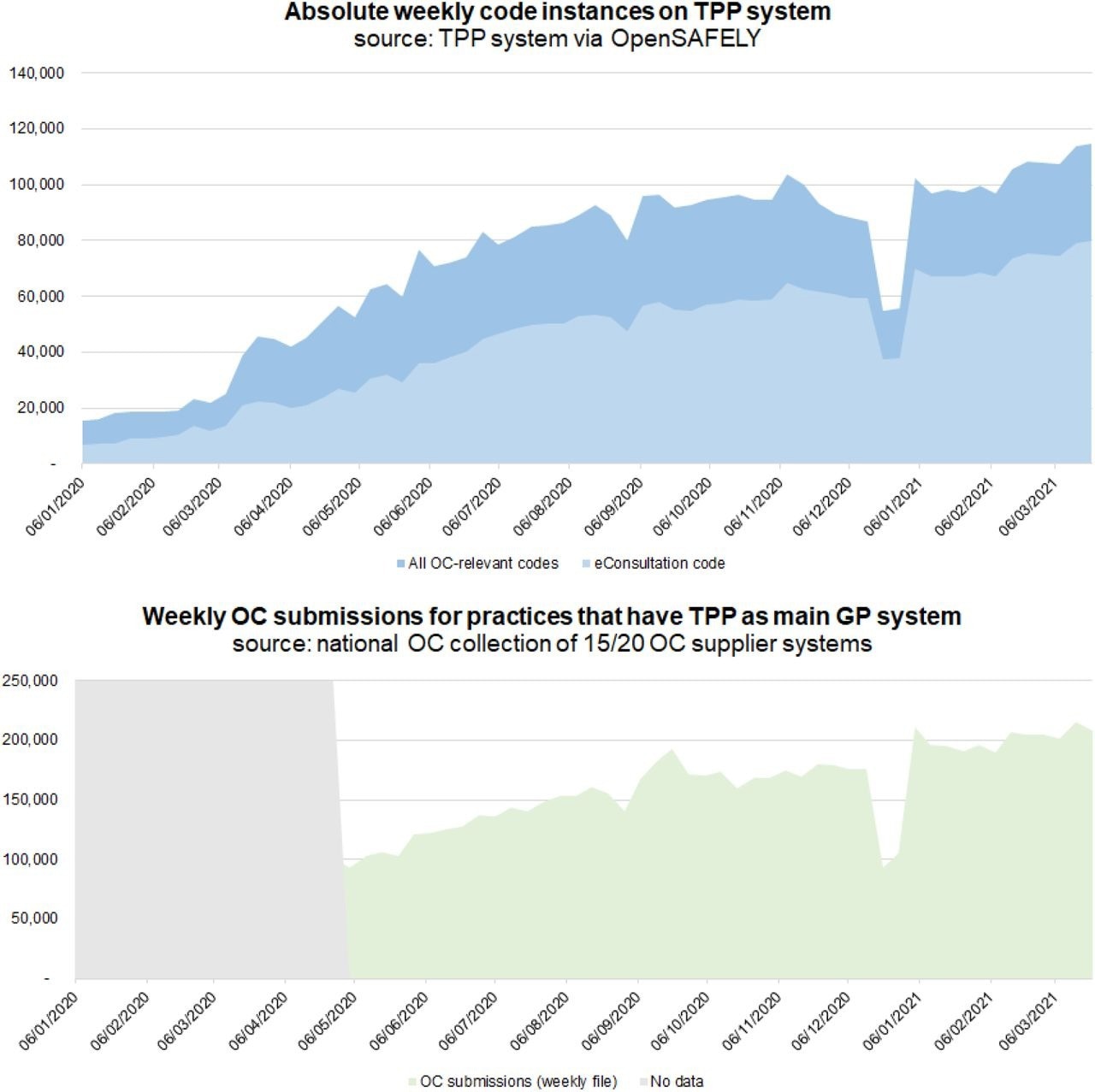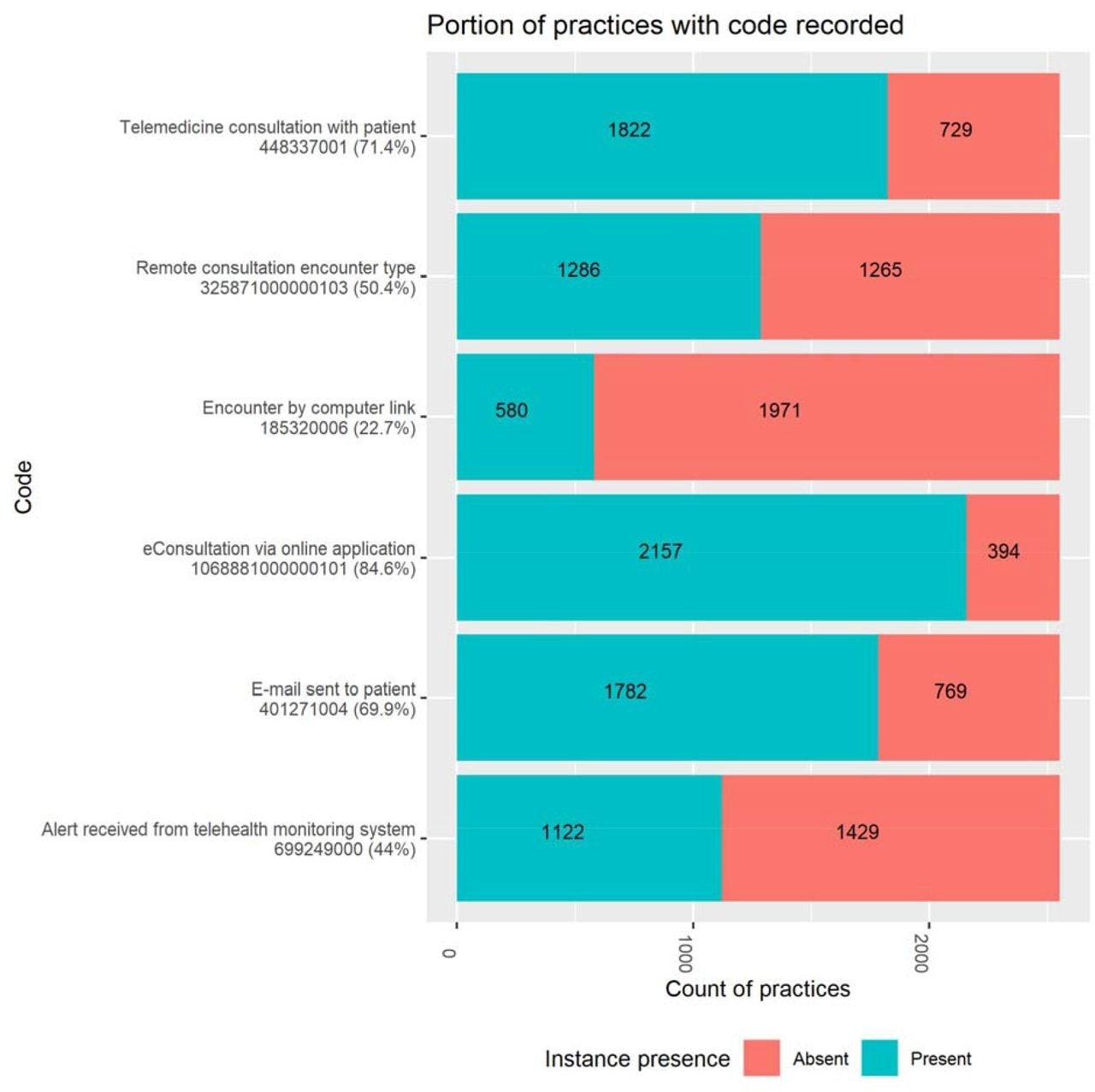In a recent study posted to the medRxiv* preprint server, researchers perform a retrospective analysis to understand the general practice coding activity employed in an online consultation system, as well as identify any variations across the pre- and post-coronavirus disease 2019 (COVID-19) pandemic periods.
 Study: Primary care coding activity related to the use of online consultation systems or remote consulting: an analysis of 53 million peoples' health records using OpenSAFELY. Image Credit: fizkes/Shutterstock
Study: Primary care coding activity related to the use of online consultation systems or remote consulting: an analysis of 53 million peoples' health records using OpenSAFELY. Image Credit: fizkes/Shutterstock
Background
In January 2019, well before the COVID-19 pandemic began, England’s National Health Service (NHS) had formulated a long-term plan to provide every patient with access to digital-first primary care by 2023 or 2024. This plan was supported by legislation that required all general practitioners to make an online consultation system accessible to all patients.
The COVID-19 pandemic resulted in a significant increase in the use of the online consultation system, with NHS data showing that 79% of medical practices had enabled online consultation systems by June 2021. If gaps in the data are considered, the coverage is estimated to be close to 95%.
One of the analytics platforms for electronic health records that was established during the COVID-19 pandemic is OpenSAFELY, which provides secure and timely access to patient data. Thus, data from OpenSAFELY can be used to understand how the online consultation system is used and implemented, as well as its impact on access to healthcare.
About the study
In the present study, researchers used primary care electronic health records from all general practitioners in England and securely analyzed the data using the OpenSAFELY platform. The data include sociodemographic parameters, diagnoses, and medications.
Taken together, electronic health records from 56.8 million patients registered with 6,367 general practitioners in England were obtained from the two electronic health record suppliers Egton Medical Information Systems (EMIS) and The Phoenix Partnership (TPP), which covers an estimated 99% of practices in the country.
The electronic health record coding activity using the online consultation system, as well as the online written consultations delivered using online messages or short message service (SMS), were analyzed. The use of primary care electronic health records allowed data from a nationally representative longitudinal cohort to be evaluated across various factors, including sociodemographic characteristics, geography, clinical information, and other health-related interventions.
The researchers aimed to understand the use of the online consultation system, as well as the prevalence of online written coding in primary care electronic health records. Any variations in the online consultation system-related coding over time, especially for the pre- and post-COVID-19 pandemic periods, as well as coding variations across general practitioners, were also assessed. The past clinical history and broad demographics of the patients with relevant online consultation system-coding activity were also examined.
Increased use of online health consultation systems during COVID-19 pandemic
Significant variation in the coding instance rates was identified across both EMIS and TPP, as well as among general practitioners in England. The coding activity was seen to increase during the study period, with a rapid increase observed during the initial stages of the COVID-19 pandemic and the first lockdown in England. Furthermore, subgroups corresponding to specific sociodemographic characteristics and clinical histories showed higher coding instance rates.
 Top: absolute weekly online consultation code instances in TPP System (source: OpenSAFELY-TPP). Bottom: weekly OC submissions for practices that have TPP as main GP system (source: national rapid collection. TPP practices were identified via the POMI data collection6. Between 66-132 practices each week had no clear system associated in POMI and were not included.
Top: absolute weekly online consultation code instances in TPP System (source: OpenSAFELY-TPP). Bottom: weekly OC submissions for practices that have TPP as main GP system (source: national rapid collection. TPP practices were identified via the POMI data collection6. Between 66-132 practices each week had no clear system associated in POMI and were not included.
Electronic consultation (eConsultation) through an online application, telemedicine consultation, and electronic mail sent to the patient were the three most used codes by more than 70% of general practitioners. The eConsultation coding events increased from one in every 1,000 registered individuals to nine in every 1,000 individuals during the beginning of the COVID-19 pandemic and first lockdown.
Among the TPP registered practices, 3,550,762 coding events were detected, of which eConsultation was reported in 84% of the practices. The sociodemographic groups that had the highest number of coding events included females, individuals between 18 and 40 years of age, White, or those who were least deprived. Patients with a history of depression, heart conditions, or asthma also had high eConsultation coding activity.
 Portion of TPP practices with any recorded activity for online consultation relevant codes in general practice (January 2019 – December 2020). Codes with no activity at all omitted.
Portion of TPP practices with any recorded activity for online consultation relevant codes in general practice (January 2019 – December 2020). Codes with no activity at all omitted.
Conclusions
A large variation in coding practices was identified among general practitioners and between the two electronic health record providers. The online consultation system also saw a rapid increase in activity during the initial stages of the COVID-19 pandemic and the first lockdown.
Furthermore, the highest coding activities were reported among females, individuals between the ages of 18 and 40, White, and the least deprived individuals. Patients with a history of depression, asthma, and heart disease also used the online consultation system more frequently.
*Important notice
medRxiv publishes preliminary scientific reports that are not peer-reviewed and, therefore, should not be regarded as conclusive, guide clinical practice/health-related behavior, or treated as established information.
- Fonseca, M., MacKenna, B., Mehrkar, A., et al. (2023). Primary care coding activity related to the use of online consultation systems or remote consulting: an analysis of 53 million peoples' health records using OpenSAFELY. medRxiv. doi:10.1101/2023.01.25.23284428 https://www.medrxiv.org/content/10.1101/2023.01.25.23284428v1
Posted in: Medical Science News | Medical Research News | Medical Condition News | Healthcare News
Tags: Asthma, Consultation, Coronavirus, Coronavirus Disease COVID-19, Depression, Electronic Health Record, Healthcare, Heart, Heart Disease, Pandemic, Primary Care, Telemedicine
.jpg)
Written by
Dr. Chinta Sidharthan
Chinta Sidharthan is a writer based in Bangalore, India. Her academic background is in evolutionary biology and genetics, and she has extensive experience in scientific research, teaching, science writing, and herpetology. Chinta holds a Ph.D. in evolutionary biology from the Indian Institute of Science and is passionate about science education, writing, animals, wildlife, and conservation. For her doctoral research, she explored the origins and diversification of blindsnakes in India, as a part of which she did extensive fieldwork in the jungles of southern India. She has received the Canadian Governor General’s bronze medal and Bangalore University gold medal for academic excellence and published her research in high-impact journals.
Source: Read Full Article
